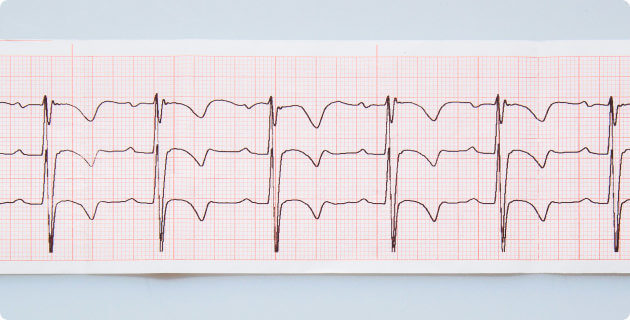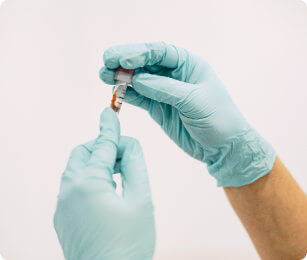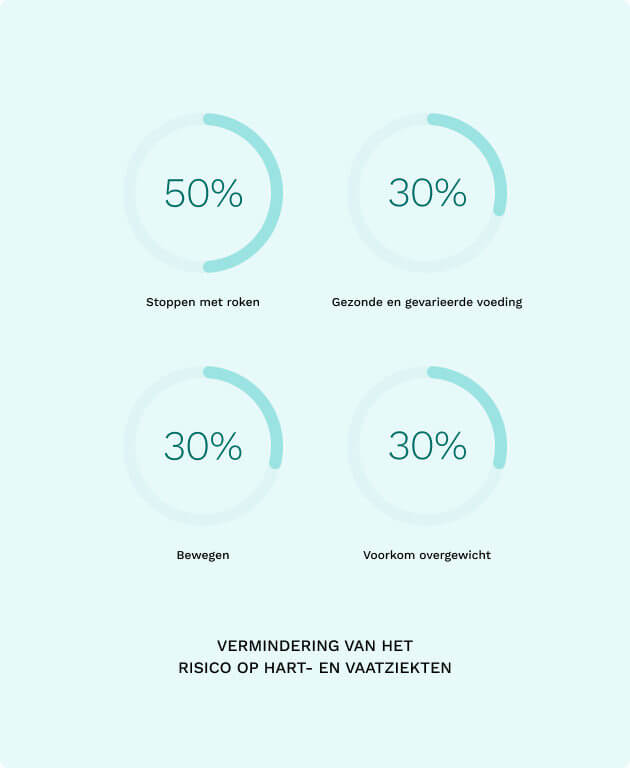Heart and vascular diseases are among the leading causes of death worldwide. In Europe, 45% of all people will ultimately die from a heart or vascular disease. Heart and vascular diseases not only have serious consequences for health but also for the quality of life. Therefore, it is crucial to know what the risk factors are for developing these diseases and, if necessary, to address these risk factors. 80% of all heart and vascular diseases are (partly) preventable through a healthy lifestyle. In this article, we discuss the most common heart and vascular diseases, the risk factors, the symptoms (for both men and women), and preventive measures you can take to reduce the risk of these diseases. Whether you are interested in checking your blood levels or want to know more about how to lead a healthy lifestyle; this article offers valuable information to help you maintain good, vital health.

What are heart and vascular diseases?
Heart and vascular diseases are disorders of the heart and blood vessels; examples include heart attacks, strokes, heart failure, and peripheral arterial diseases. These diseases are usually caused by atherosclerosis, also known as arteriosclerosis, a condition in which the blood vessels become clogged with a buildup of fat and cholesterol. This can lead to narrowing or blockages of the blood vessels, which can obstruct blood flow and ultimately lead to a heart attack or stroke.
Most common heart and vascular diseases
The most common heart and vascular diseases are:
- Heart attack: a condition in which blood flow to the heart is blocked by a blood clot or narrowed vessel, causing a part of the heart to die and thus function less well.
- Stroke: a condition in which blood flow to the brain is blocked or disrupted, resulting in brain damage.
- Heart failure: a condition in which the heart is unable to pump enough blood. Heart failure can result from various conditions.
- Peripheral arterial diseases: disorders of the blood vessels in the arms and legs, which impede blood flow. In severe cases, this can lead to amputation of a body part.


Risk factors for heart and vascular diseases
There are several risk factors that can increase the risk of developing heart and vascular diseases:
- Smoking: smoking is one of the most important risk factors for developing heart and vascular diseases. Tobacco particles damage the vascular wall, causing blood to clot faster and thus quickly blocking blood flow. In addition, nicotine raises blood pressure, which is also a risk for developing heart and vascular diseases. The more and longer you smoke, the greater the risk of disease.
- High cholesterol levels in the blood: high cholesterol levels can lead to atherosclerosis and increase the risk of heart and vascular diseases. High cholesterol levels can result from eating too much saturated fat, hereditary predisposition, diabetes, smoking, or being overweight.
- High blood pressure: high blood pressure can damage blood vessels and obstruct blood flow, increasing the risk of heart and vascular diseases.
- Diabetes: diabetes can lead to damage to the blood vessels and increase the risk of heart and vascular diseases.
- Overweight: overweight can increase the risk of heart and vascular diseases because it can lead to high blood pressure and high cholesterol levels.
- Alcohol: excessive alcohol consumption can lead to high blood pressure and high cholesterol levels, increasing the risk of heart and vascular diseases.
- Diet: a diet high in saturated fats, salt, and sugar can increase the risk of heart and vascular diseases.

Symptoms for both men and women
Heart and vascular diseases are thus one of the leading causes of death in the world. It is therefore important to recognize the symptoms and take action when they occur. The symptoms of heart and vascular diseases in men and women partly overlap but can also differ in some respects.
Men often experience the following symptoms:
- Chest pain that may radiate to the arms, neck, jaw, or back
- Shortness of breath: difficulty breathing, especially during physical activity.
- Nausea
- Fatigue or weakness
- Sweating


Women, however, may experience different symptoms than men. In women, there are often signs that are less clear than in men. Moreover, heart and vascular diseases in women often develop later in life because female sex hormones appear to be a protective factor. Due to this difference with men, the symptoms are sometimes not immediately recognized as a heart and vascular disease, which can lead to delays in diagnosis and treatment. Women often experience the following in heart and vascular diseases:
- Chest pain or discomfort, stomach, neck, jaw, shoulders, or back, sometimes with radiation to the left shoulder or arm, but sometimes also to the right side.
- Shortness of breath: difficulty breathing, especially during physical activity.
- Nausea or vomiting
- Palpitations
- Fatigue or weakness
- Sweating
In addition to the above symptoms, heart and vascular diseases can also cause dizziness, fainting, shortness of breath with exertion, and swelling of the legs. If you experience any of these symptoms, our advice is always to consult your own doctor as soon as possible to discuss these complaints. With heart and vascular diseases, it is very important to start treatment on time.



In addition, it is important to regularly check your blood pressure and cholesterol levels and to continuously critically assess your lifestyle. Lifestyle, age, blood pressure, medical history, and a blood test together can give a risk assessment. It is therefore important to regularly check your blood values and to detect heart and vascular diseases on time.
Related tests



The origin of heart and vascular diseases
Heart and vascular diseases arise from a combination of genetic and lifestyle factors. Heredity plays a role in the risk of developing heart and vascular diseases. Some people have a genetic predisposition to these conditions; the DNA in which this genetic predisposition is “locked in” cannot be changed. However, a healthy lifestyle can significantly reduce the expression of those genes, reducing the risk of heart and vascular diseases. Smoking, an unhealthy diet, and lack of exercise increase the risk of developing heart and vascular diseases, even in people without a genetic predisposition. It is therefore important to adopt a healthy lifestyle and always be alert to risk factors for heart and vascular diseases, regardless of your genetic background. This can help reduce the risk of developing heart and vascular diseases and improve your overall health.
Heart and vascular disease prevention
As mentioned earlier, we cannot change our genetic predisposition. However, we can ensure that we maintain our lifestyle as best as possible, so that the risk of heart and vascular diseases is kept as low as possible. If you value your heart health, it is necessary to critically review your risk factors for heart and vascular diseases frequently. This control involves reviewing your lifestyle, your blood pressure, and checking certain values in your blood.




Some important preventive measures are:
- Quit smoking: quitting smoking can reduce the risk of heart and vascular diseases by 50%.
- Healthy and varied diet: a diet rich in fruits, vegetables, whole grains, proteins, and healthy unsaturated fats can reduce the risk of heart and vascular diseases by 30%.
- Exercise: regular exercise can reduce the risk of heart and vascular diseases by 30%. Try to exercise for at least 150 minutes per week, but research shows that the more you exercise, the better it is for your health.
- Prevent overweight: people who are overweight have a significantly increased risk of heart and vascular diseases. It is important to maintain a healthy weight; this reduces your risk by 20-30%.
- Drink as little alcohol as possible: researchers long thought that moderate alcohol consumption (such as drinking a glass of wine per day) reduced the risk of heart and vascular diseases. This turns out not to be the case. It is best to drink no alcohol at all.
- Prevent high blood pressure: blood pressure is raised by an unhealthy lifestyle (smoking, overweight, unhealthy eating). High blood pressure is a risk factor for heart and vascular diseases. It is best to keep your blood pressure <120/80 mmHg to reduce the risk of heart and vascular diseases. So check your blood pressure regularly.
- Stress management: reducing stress can reduce the risk of heart and vascular diseases.
- Preventing high cholesterol levels: a high total cholesterol or an incorrect distribution of different cholesterol levels increases the risk of heart and vascular diseases. It is therefore important to regularly check your cholesterol levels in the blood to keep the risk of heart and vascular diseases as low as possible.

It is important to note that the above points should be taken together to make an assessment of someone’s risk of heart and vascular diseases. A single factor is not sufficient to determine someone’s risk. At Easly, doctors are working to help you make this risk assessment.
Conclusion
Heart and vascular diseases are one of the leading causes of death worldwide and can have serious implications for one’s health and quality of life. It is crucial to be aware of your risk factors and, where possible, to intervene. Preventive measures, such as striving for a healthy lifestyle, can reduce the likelihood of developing heart and vascular diseases. Regularly monitoring your blood pressure and blood values is an essential part of preventing heart and vascular diseases. This way, you can act early if there is a risk factor, such as high blood pressure or high cholesterol levels.

If you experience symptoms that may indicate heart and vascular diseases, as mentioned above, we always recommend making an appointment with your own doctor. If you are curious about your risk of heart and vascular diseases, we offer a simple preventive heart and vascular examination at Easly to check your blood values. This way, you can monitor your health and address any risk factors promptly. One of our doctors can also advise you on the best preventive measures for your specific situation.







